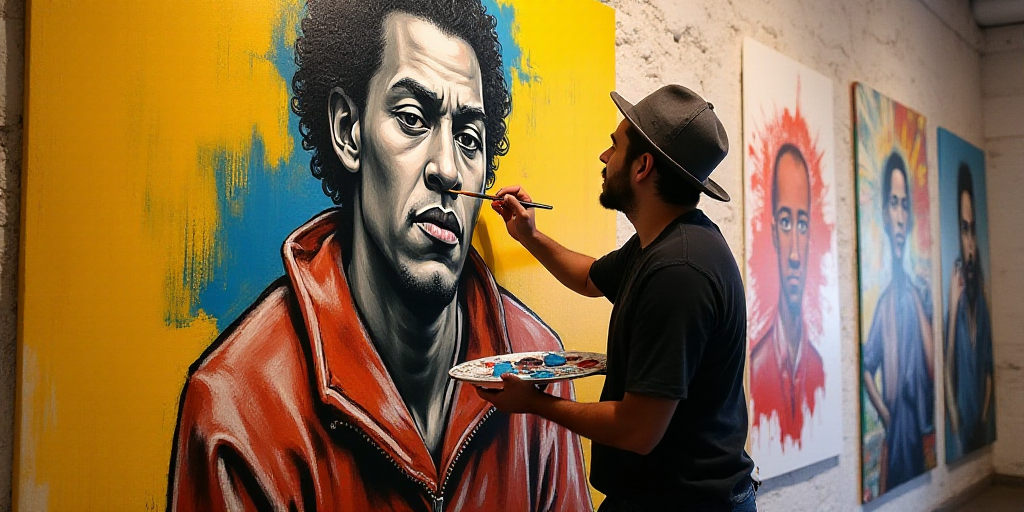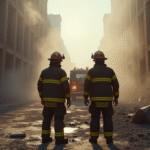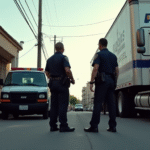Masaki Hironaka’s Childhood Memories Come to Life Through Art
Masaki Hironaka, a five-year-old boy at the time, crossed hands with his mother through the rubble of Hiroshima four days after the atomic bomb dropped by the United States in 1945. Now, his memories are brought to life through art.
Hironaka’s recollections, along with those of other “hibakusha” or atomic bomb survivors, have been transformed into powerful paintings by students at the Motomachi High School in Hiroshima for nearly two decades.
The Motomachi High School Project
Initiated by the Hiroshima Peace Memorial Museum, this project has seen over 200 artworks created to transmit the memory of the atomic bombing to younger generations.
Recently, the school unveiled fifteen new pieces commemorating the 80th anniversary of the August 6, 1945 tragedy. These paintings depict soldiers writhing in pain, a terrified girl amidst the flames, and young Masaki, looking up at his mother as they navigate through still-smoldering ruins on August 10, 1945.
Hironaka’s Reflections
“I think this painting very faithfully captures what I felt back then,” Hironaka told AFP, nodding in approval at the artwork that immortalizes “an unforgettable page” of his life.
In the painting by student Hana Takasago, Hironaka’s mother, now a widow, holds his hand and carries his younger sister amidst the chaos. “At that moment, I felt a deep determination to help her, despite my young age,” Hironaka said. “This feeling is what’s captured here.”
Hironaka, now 85, recounted his traumatic experience: “I was only five when it happened and was deeply troubled by such a disturbing event. When I try to recall those moments, I can barely hold back tears.”
Transmitting the Memory
The atomic bomb dropped on Hiroshima killed approximately 140,000 people, with many more succumbing later due to radiation exposure.
The Motomachi High School project is part of a broader effort by the Hiroshima Peace Memorial Museum to ensure that future generations remember this devastating event.
Over the years, survivors like Hironaka have met regularly with students to discuss the evolution of the artworks and suggest changes, ensuring accuracy in portraying their experiences.
“The Last Generation”
Many teenagers had to rely on their imagination or historical documents to depict the horrors of the atomic bombing, a task that was often emotionally draining.
Mei Honda, 18, described her artwork as “emotionally exhausting” as she tried to portray the charred, hanging bodies of victims. Her painting shows a woman in this state attempting to drink water.
With only about 100,000 atomic bomb survivors left, with an average age of 86, there’s a sense of urgency among the students involved in this project.
“We might be the last generation to hear firsthand accounts from ‘hibakusha’,” said Aoi Fukumoto, 19. “For some, like Hana Takasago, it’s been an enlightening experience.”
Before participating in this project, Takasago felt the consequences of the atomic bomb were distant, despite being from Hiroshima. After hearing Hironaka’s story, she said, “I can’t remain a passive observer.”
Key Questions and Answers
- Who are the “hibakusha”? The “hibakusha” refers to the survivors of the atomic bombings in Hiroshima and Nagasaki.
- How many survivors remain? Approximately 100,000 atomic bomb survivors remain, with an average age of 86.
- What is the Motomachi High School project? It’s an art initiative where students transform survivors’ memories into paintings to preserve the memory of the atomic bombings for future generations.
- Why is this project important? As the last generation likely to hear firsthand accounts from survivors, this project ensures their stories are not forgotten.






